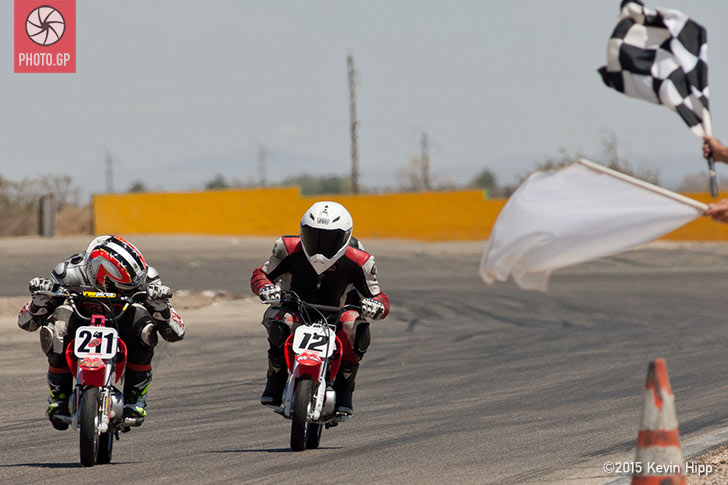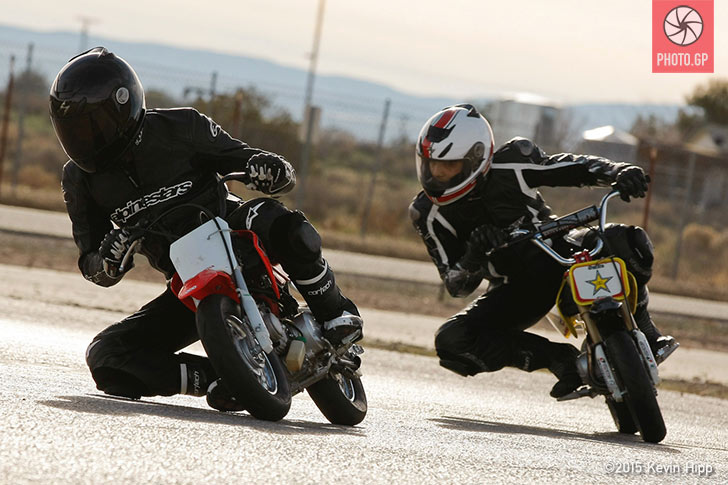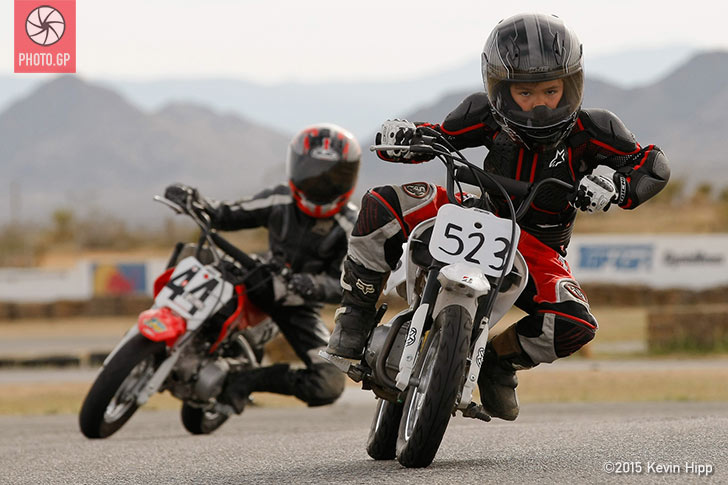Interview: Young Lee, Founder of M1GP

SJ: Do you have any sense of how your program compares to mini moto programs in Spain or Italy?
YL: Only on a surface level. I do know that mini moto in Europe is not such an alien thing as it is here in the US. It’s much more well known and even supported by sponsors, riders and the industry. Here in the States it’s very much off the radar of both ridership and industry.
One thing I have heard over the years, however, is that when young American riders who are fast here get to Europe, they generally don’t stack up well against the competition. That’s something we could change if we had the structure and the support. The roadmap is there, we don’t have to reinvent the wheel and it’s working in these countries. We just have to get that here in the States.
SJ: Is that something you’d like to see in the future of M1GP? Would you like to have a program that’s similar to what’s offered in Spain and Italy?
YL: Absolutely. It’s always been part of the agenda of M1GP, carried over from Al Lyons’ vision.
SJ: What would it take to make that happen? What kind of support would M1GP need to become a series where kids get the level of competition they need to head to Europe and succeed?
YL: I believe the answer is not any single thing, but a multi-layered solution. There is interest in growing the sport here in the USA, and maybe the stars are aligning for important things to happen. MotoAmerica and Dorna’s interest in growing the sport here is positive for American motorcycle racing, which is related to what we’re doing.
Another important part of the solution is industry support. I don’t mean just sponsorship or contingency, but partnerships with people and companies who have a clear vision and a proven track-record. Honda and WERA are two great examples of such companies.
Public awareness is another factor which is needed for growth and change in mini-moto. For example, what you see in car racing is that people get the connection between karting and Formula 1. There’s no stigma attached to karting. In fact, we’ve seen in the past where Michael Schumacher or another top driver went to a kart racing event and no one was poking fun at them. The car world seems to get it – they understand that karts are where driving skills are developed and honed.
But in the motorcycle culture here in the United States there’s a stigma attached to small bikes. I hear it all the time. On the rider side, there’s this whole ego, chip on the shoulder, pride thing that is attached to motorcycling, the thought of being on a smaller bike to some, is silly, or even shameful. But when we get these riders out to our clinics with mini-bikes, they have this moment of awareness when they say Oh my gosh, I can learn so much on these small bikes in such a short amount of time and they’re a blast, and they’re low risk, and this is something I missed out on.
On the industry side, the stigma exists also, and is perpetuated with similar issues, and the focus on big bikes, but this seems to be changing, slowly.
If we’re able to raise people’s awareness about small bikes and especially mini-moto, and how beneficial they are to riding and to racing, in the big picture I think it will be a benefit for everyone – industry and riders alike.
I’m currently involved with some ‘out-of-the-box’ projects with some great people and industry leaders which I’m very excited about, which if implemented, will help M1GP become a more significant series, help the sport in general, and help get American riders competing and getting on the podiums at the world level.
Obviously I’m a little biased. (laughs)
![]()

![]()

![]()

![]()

![]()

Photographs: ©2015 by Kevin Hipp and Brody Cox – All Rights Reserved









Please sign in or register to contribute a comment or question.